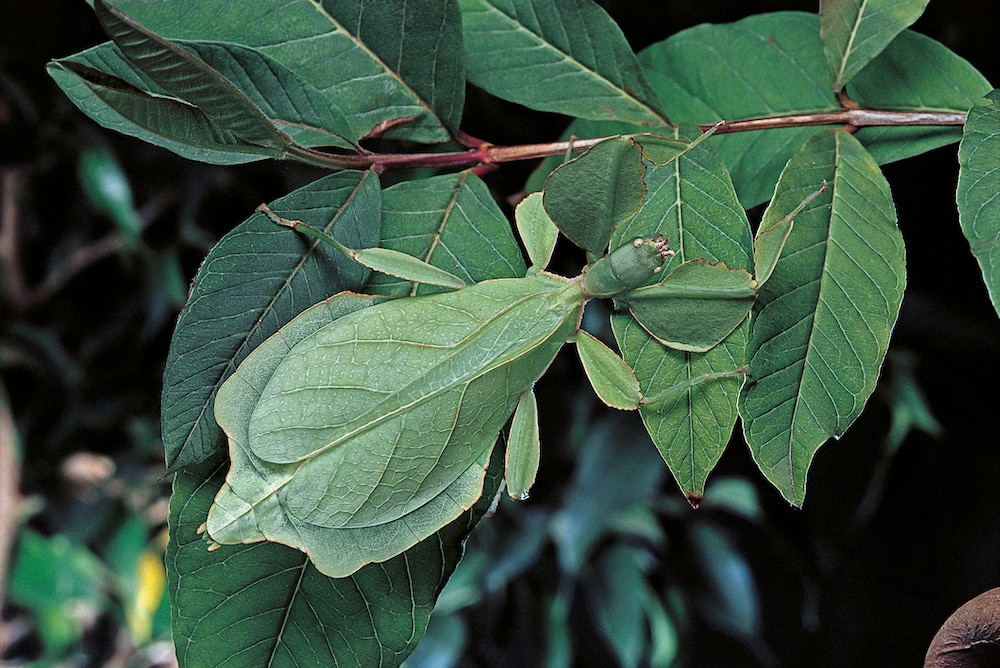Create a free profile to get unlimited access to exclusive videos, sweepstakes, and more!
Be the stick. Some camouflage is better than others
Is it really you?

Harry, our hero in Resident Alien (now streaming on Peacock!), gets by with a little help from some new friends and the convenient ability to dress up like a human being. His incredible interstellar camouflage doesn’t stop anyone from seeing him, but it does stop them from recognizing what he truly is.
That’s the trick with camouflage, isn’t it? The best kinds work by confusing the viewer such that they don’t see you for what you really are, either an easy meal or an attacker... or an alien. Animals use camouflage in various ways to lie about what’s really going on beneath their exterior, but until recently no one had ever compared the different camouflage strategies to see which one is truly the best.
The chance would come in 2020. When the pandemic hit, laboratories around the world closed up shop. That was the case for João Vitor de Alcantara Viana, a researcher at the State University of Campinas, in Brazil. When everything locked down, one of de Alcantara Viana’s professors put out a call, looking for anyone interested in doing metanalysis, comparing existing studies in the same field to find wider patterns. It was the right sort of research for the moment and spawned a first of its kind analysis of comparative camouflage efficacy. First, however, they needed to identify common variables in a wide range of studies.
“The studies used all kinds of variables, but we found two of the most common. One is search time, the time it takes for a predator to find prey. The other is the attack rate of predators on camouflaged and non-camouflaged prey models,” de Alcantara Viana told SYFY WIRE.
Using those values, the team compared the search time and attack rate for various camouflage strategies including background matching and masquerading. There is some overlap in these two strategies, but background matching is generally when an animal endeavors to look like or blend into the background environment. Masquerade gets more specific and entails an animal making itself look like a particular object like a leaf, a stick, or even bird droppings. Importantly, these are largely inanimate objects and not to be confused with when an animal pretends to be a different animal.
Researchers found that in general any type of camouflage is better than nothing, although for some animals it's smarter to leg it. On average, camouflage increased search time by 62 percent and dropped the attack rate by about 27%. However, some camouflage strategies are better than others. The numbers show that if you’re going to obfuscate your appearance, it’s best to pretend to be an uninteresting object. Those animals who masquerade as something else take 300% longer to find, a staggering five-fold increase from the baseline.
“Masquerade is very effective. It impairs the recognition of the predator. So, the predator can detect the prey, but they don’t recognize them as prey. It’s a very specialized type of camouflage but it has some limitations,“ de Alcantara Viana said.
In order to effectively masquerade as something else, you need to be roughly the same size. That might be why caterpillars so often pretend to be twigs and other insects pretend to be leaves. If a large moth attempted to look like a bird dropping, an attacking predator might realize something was off. It’s also helpful — read: required — that the thing you’re pretending to be actually exist nearby. Mimicking a leaf that doesn’t exist in your neck of the woods is as likely to make you a target as to hide your whereabouts.
Of course, camouflage isn’t purely the domain of the hunted. Hunters are also dressing themselves up to more easily sneak up on unsuspecting morsels. The team is interested in taking their methods to the other side of the equation to see how predators use different types of camouflage. A notable example is the crab spider, a small arachnid which lives and hunts on flowers. It uses specific coloration to match the scheme of the flower and hide in plain sight. Some even have the ability to change their coloration depending on the flower they’ve chosen. It remains to be seen if masquerade proves to be the best for predators as well.
Be careful out there. Whether predator or prey, nothing is quite as it appears.


























